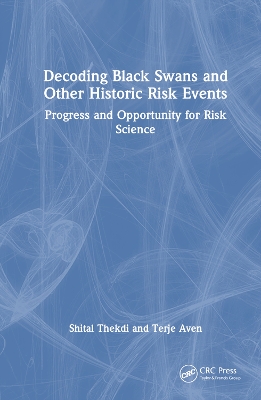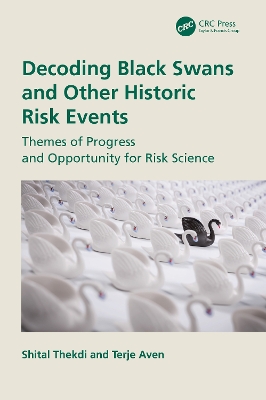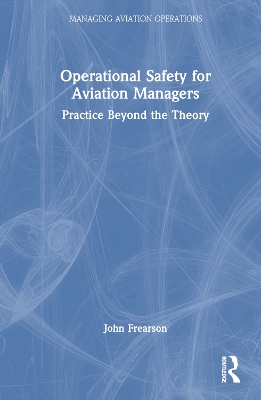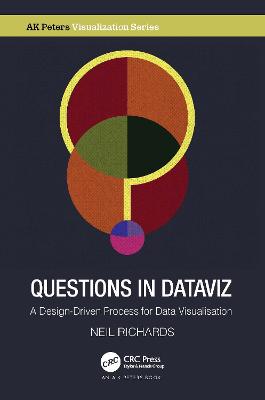Decoding Black Swans and Other Historic Risk Events
 portes grátis
portes grátis
Decoding Black Swans and Other Historic Risk Events
Themes of Progress and Opportunity for Risk Science
Aven, Terje; Thekdi, Shital
Taylor & Francis Ltd
10/2024
124
Dura
9781032567631
Pré-lançamento - envio 15 a 20 dias após a sua edição
Descrição não disponível.
Foreword
About the Authors
Acknowledgments
Chapter 1: Framework Used to decode the Risk Events
Chapter 2: Historical Events to be Decoded
Global Pandemics
Industrial Accidents
Infrastructure Failures
Natural Disasters
Acts of Terrorism and War
Food Safety
Chapter 3: Historical Perspective on Risk
Chapter 4: Historical Precedent for Remembering and Understanding Risk Issues
Chapter 5: Characterization of Surprise and Unpredictability
Chapter 6: Severity of Consequences in Relation to Uncertainties and Knowledge
Titanic case - Evaluation of Consequences
Chapter 7: Uncertainty Characterizations
Fukushima Daiichi Case - Evaluation of Probabilistic Risk Assessment at Nuclear Plants
Chapter 8: Types of Knowledge That Inform Understanding of Risk
9/11 case - Classification of Knowledge
Chapter 9: Credibility of Knowledge
Food Additives Case - Credibility of Knowledge
Chapter 10: Factors Influencing Understanding and Communication of Risk, Uncertainties, and Probabilities
Cuyahoga River Fire - Communication of Risk-Related Information
Chapter 11: Biases, Misinformation, and Disinformation
Biases and Moral Hazards - East Palestine Train Derailment and Similar Freight Accidents
COVID-19 Misinformation and Disinformation
Chapter 12: Balancing Various Dimensions of a Risk Application
BP Oil Spill - Dimensions of Risk for Oil and Gas Operations and Related Regulation
Chapter 13: The Weight Given to Resilience
Hurricane Katrina - Why New Orleans Was Vulnerable and How Resilience Emerged
Chapter 14: The Big Picture of Risk Science Surrounding Major Historical Events
Tornadoes - The Big Picture Around Risk Issues
Smoking, Social Media, and Processed Foods - Linking Three Global Risk Issues
Chapter 15: How Risk Science Improves the Ability to Address the Gaps in the Themes Presented
Chapter 16: Who Is the Risk Analyst and What Are the Expectations
Chapter 17: Unresolved Issues in Risk Science Identified in the Presented Themes
Abraham Lincoln Assassination - Hindsight Bias versus Noise Leading to a Risk Event
Chapter 18: Conclusions
Further Reading
Index
About the Authors
Acknowledgments
Chapter 1: Framework Used to decode the Risk Events
Chapter 2: Historical Events to be Decoded
Global Pandemics
Industrial Accidents
Infrastructure Failures
Natural Disasters
Acts of Terrorism and War
Food Safety
Chapter 3: Historical Perspective on Risk
Chapter 4: Historical Precedent for Remembering and Understanding Risk Issues
Chapter 5: Characterization of Surprise and Unpredictability
Chapter 6: Severity of Consequences in Relation to Uncertainties and Knowledge
Titanic case - Evaluation of Consequences
Chapter 7: Uncertainty Characterizations
Fukushima Daiichi Case - Evaluation of Probabilistic Risk Assessment at Nuclear Plants
Chapter 8: Types of Knowledge That Inform Understanding of Risk
9/11 case - Classification of Knowledge
Chapter 9: Credibility of Knowledge
Food Additives Case - Credibility of Knowledge
Chapter 10: Factors Influencing Understanding and Communication of Risk, Uncertainties, and Probabilities
Cuyahoga River Fire - Communication of Risk-Related Information
Chapter 11: Biases, Misinformation, and Disinformation
Biases and Moral Hazards - East Palestine Train Derailment and Similar Freight Accidents
COVID-19 Misinformation and Disinformation
Chapter 12: Balancing Various Dimensions of a Risk Application
BP Oil Spill - Dimensions of Risk for Oil and Gas Operations and Related Regulation
Chapter 13: The Weight Given to Resilience
Hurricane Katrina - Why New Orleans Was Vulnerable and How Resilience Emerged
Chapter 14: The Big Picture of Risk Science Surrounding Major Historical Events
Tornadoes - The Big Picture Around Risk Issues
Smoking, Social Media, and Processed Foods - Linking Three Global Risk Issues
Chapter 15: How Risk Science Improves the Ability to Address the Gaps in the Themes Presented
Chapter 16: Who Is the Risk Analyst and What Are the Expectations
Chapter 17: Unresolved Issues in Risk Science Identified in the Presented Themes
Abraham Lincoln Assassination - Hindsight Bias versus Noise Leading to a Risk Event
Chapter 18: Conclusions
Further Reading
Index
Este título pertence ao(s) assunto(s) indicados(s). Para ver outros títulos clique no assunto desejado.
Risk Science;Major Disasters;Natural Disasters;Occupational safety;Risk assessment;Black Swan
Foreword
About the Authors
Acknowledgments
Chapter 1: Framework Used to decode the Risk Events
Chapter 2: Historical Events to be Decoded
Global Pandemics
Industrial Accidents
Infrastructure Failures
Natural Disasters
Acts of Terrorism and War
Food Safety
Chapter 3: Historical Perspective on Risk
Chapter 4: Historical Precedent for Remembering and Understanding Risk Issues
Chapter 5: Characterization of Surprise and Unpredictability
Chapter 6: Severity of Consequences in Relation to Uncertainties and Knowledge
Titanic case - Evaluation of Consequences
Chapter 7: Uncertainty Characterizations
Fukushima Daiichi Case - Evaluation of Probabilistic Risk Assessment at Nuclear Plants
Chapter 8: Types of Knowledge That Inform Understanding of Risk
9/11 case - Classification of Knowledge
Chapter 9: Credibility of Knowledge
Food Additives Case - Credibility of Knowledge
Chapter 10: Factors Influencing Understanding and Communication of Risk, Uncertainties, and Probabilities
Cuyahoga River Fire - Communication of Risk-Related Information
Chapter 11: Biases, Misinformation, and Disinformation
Biases and Moral Hazards - East Palestine Train Derailment and Similar Freight Accidents
COVID-19 Misinformation and Disinformation
Chapter 12: Balancing Various Dimensions of a Risk Application
BP Oil Spill - Dimensions of Risk for Oil and Gas Operations and Related Regulation
Chapter 13: The Weight Given to Resilience
Hurricane Katrina - Why New Orleans Was Vulnerable and How Resilience Emerged
Chapter 14: The Big Picture of Risk Science Surrounding Major Historical Events
Tornadoes - The Big Picture Around Risk Issues
Smoking, Social Media, and Processed Foods - Linking Three Global Risk Issues
Chapter 15: How Risk Science Improves the Ability to Address the Gaps in the Themes Presented
Chapter 16: Who Is the Risk Analyst and What Are the Expectations
Chapter 17: Unresolved Issues in Risk Science Identified in the Presented Themes
Abraham Lincoln Assassination - Hindsight Bias versus Noise Leading to a Risk Event
Chapter 18: Conclusions
Further Reading
Index
About the Authors
Acknowledgments
Chapter 1: Framework Used to decode the Risk Events
Chapter 2: Historical Events to be Decoded
Global Pandemics
Industrial Accidents
Infrastructure Failures
Natural Disasters
Acts of Terrorism and War
Food Safety
Chapter 3: Historical Perspective on Risk
Chapter 4: Historical Precedent for Remembering and Understanding Risk Issues
Chapter 5: Characterization of Surprise and Unpredictability
Chapter 6: Severity of Consequences in Relation to Uncertainties and Knowledge
Titanic case - Evaluation of Consequences
Chapter 7: Uncertainty Characterizations
Fukushima Daiichi Case - Evaluation of Probabilistic Risk Assessment at Nuclear Plants
Chapter 8: Types of Knowledge That Inform Understanding of Risk
9/11 case - Classification of Knowledge
Chapter 9: Credibility of Knowledge
Food Additives Case - Credibility of Knowledge
Chapter 10: Factors Influencing Understanding and Communication of Risk, Uncertainties, and Probabilities
Cuyahoga River Fire - Communication of Risk-Related Information
Chapter 11: Biases, Misinformation, and Disinformation
Biases and Moral Hazards - East Palestine Train Derailment and Similar Freight Accidents
COVID-19 Misinformation and Disinformation
Chapter 12: Balancing Various Dimensions of a Risk Application
BP Oil Spill - Dimensions of Risk for Oil and Gas Operations and Related Regulation
Chapter 13: The Weight Given to Resilience
Hurricane Katrina - Why New Orleans Was Vulnerable and How Resilience Emerged
Chapter 14: The Big Picture of Risk Science Surrounding Major Historical Events
Tornadoes - The Big Picture Around Risk Issues
Smoking, Social Media, and Processed Foods - Linking Three Global Risk Issues
Chapter 15: How Risk Science Improves the Ability to Address the Gaps in the Themes Presented
Chapter 16: Who Is the Risk Analyst and What Are the Expectations
Chapter 17: Unresolved Issues in Risk Science Identified in the Presented Themes
Abraham Lincoln Assassination - Hindsight Bias versus Noise Leading to a Risk Event
Chapter 18: Conclusions
Further Reading
Index
Este título pertence ao(s) assunto(s) indicados(s). Para ver outros títulos clique no assunto desejado.







